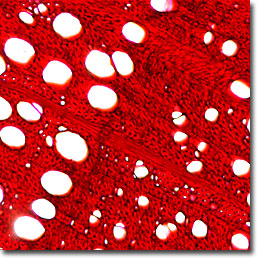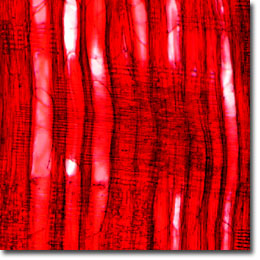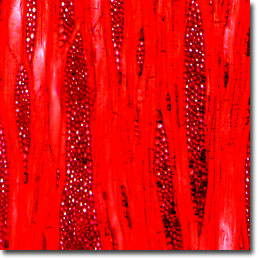The Bitternut Hickory
The Bitternut Hickory (Carya cordiformis; a member of the Pecan hickory class) is a hardwood tree found throughout the eastern United States from northern New Hampshire south to Florida and then west to Minnesota and eastern Texas. This native hardwood grows to heights of over 100 feet and the crown can spread as wide as the tree is tall. The sapwood is white to pale brown, while the heartwood is light to dark brown, often with a reddish tinge.

Cross Section

Radial Section

Tangential Section
Bitternut hickory nuts are encased in a husk that blackens when they ripen in September or early fall. The bitternut is the largest of the hickories, and is the only hickory tree that produces a nut that is not edible (or desirable) for humans because of its extreme bitterness. Because hickory wood is unsurpassed in its inherent qualities of hardness, strength, toughness, and resiliency, bitternut hickory wood is often used for tool handles--especially for impact tools such as hammers, axes, picks, and sledges. The wood is also found in sporting goods such as baseball bats, skis, gymnastic bars, and rackets. Non-structural duties include skewers, chips for smoking meats, and fuel wood.
Microscopic examination of iron-alum hematoxylin and safranin stained thin sections reveals very few vessels, but with large late-wood vessels. The perforation plates are simple and inter-vessel pits average 6 to 8 micrometers in diameter with a shape that is predominately orbicular to oval, although in some instances they appear angular (through crowding). Parenchyma is marginal and fiber tracheids range from thin to thick-walled and are frequently gelatinous. The rays are 1 to 5 seriate and homocellular to heterocellular.